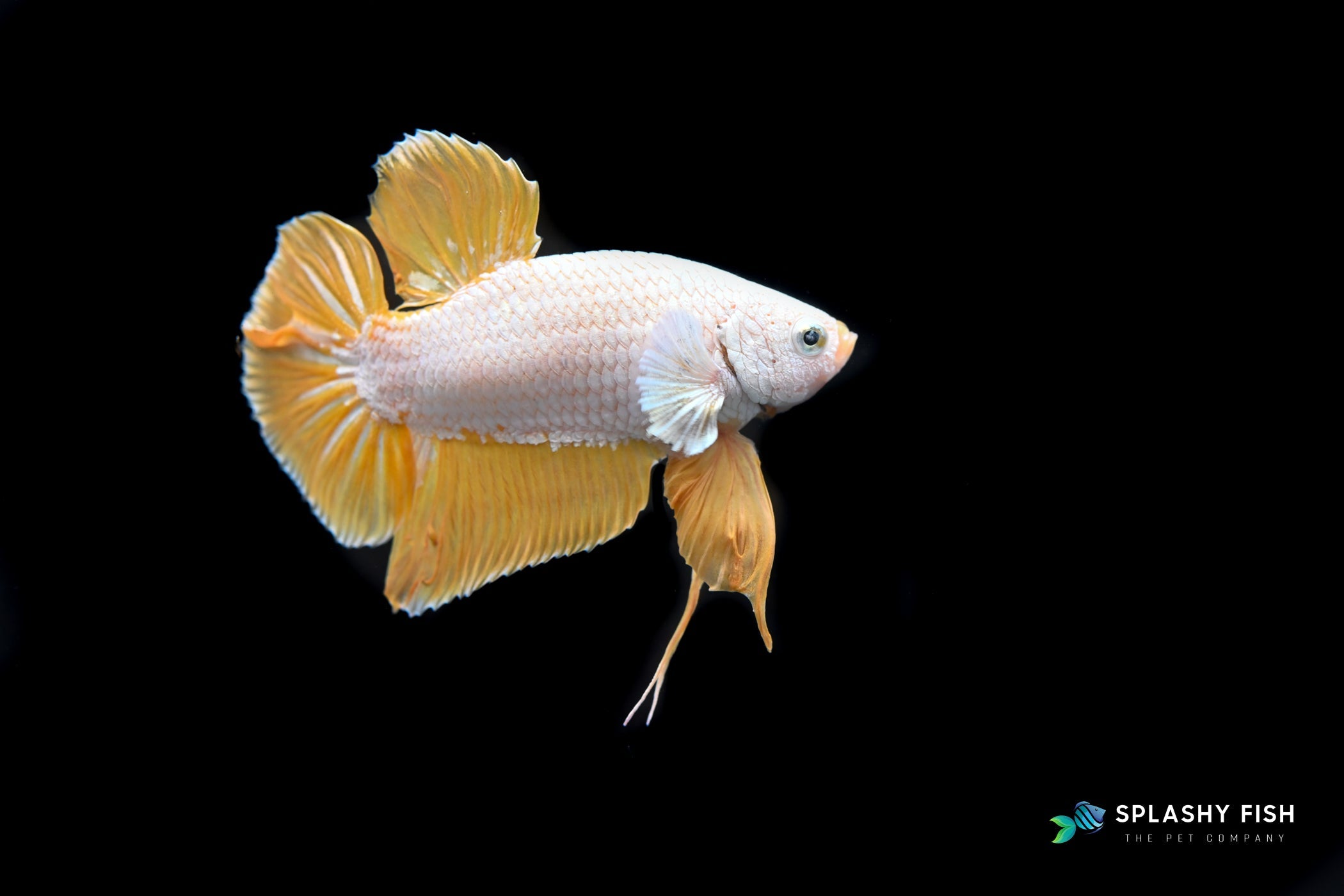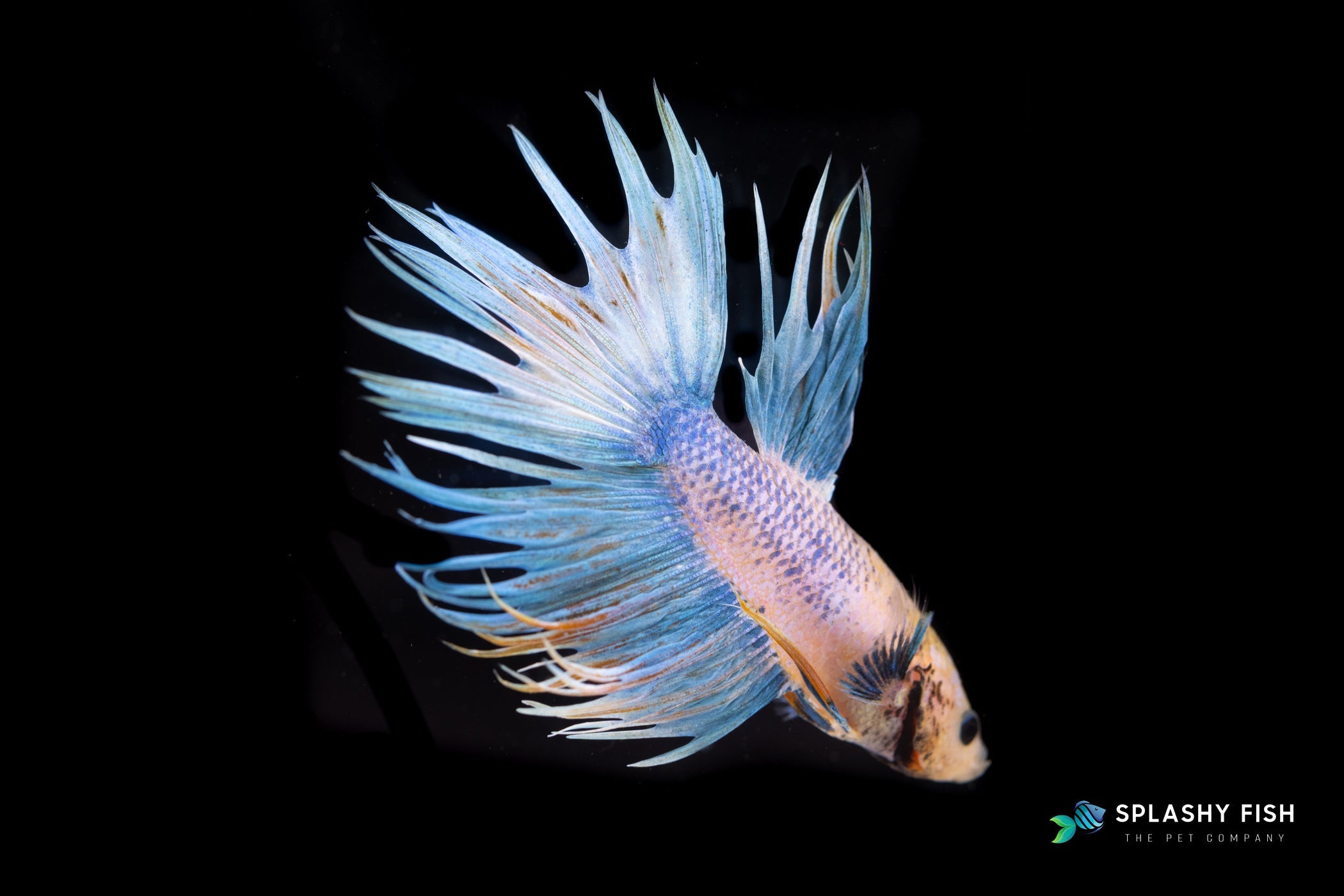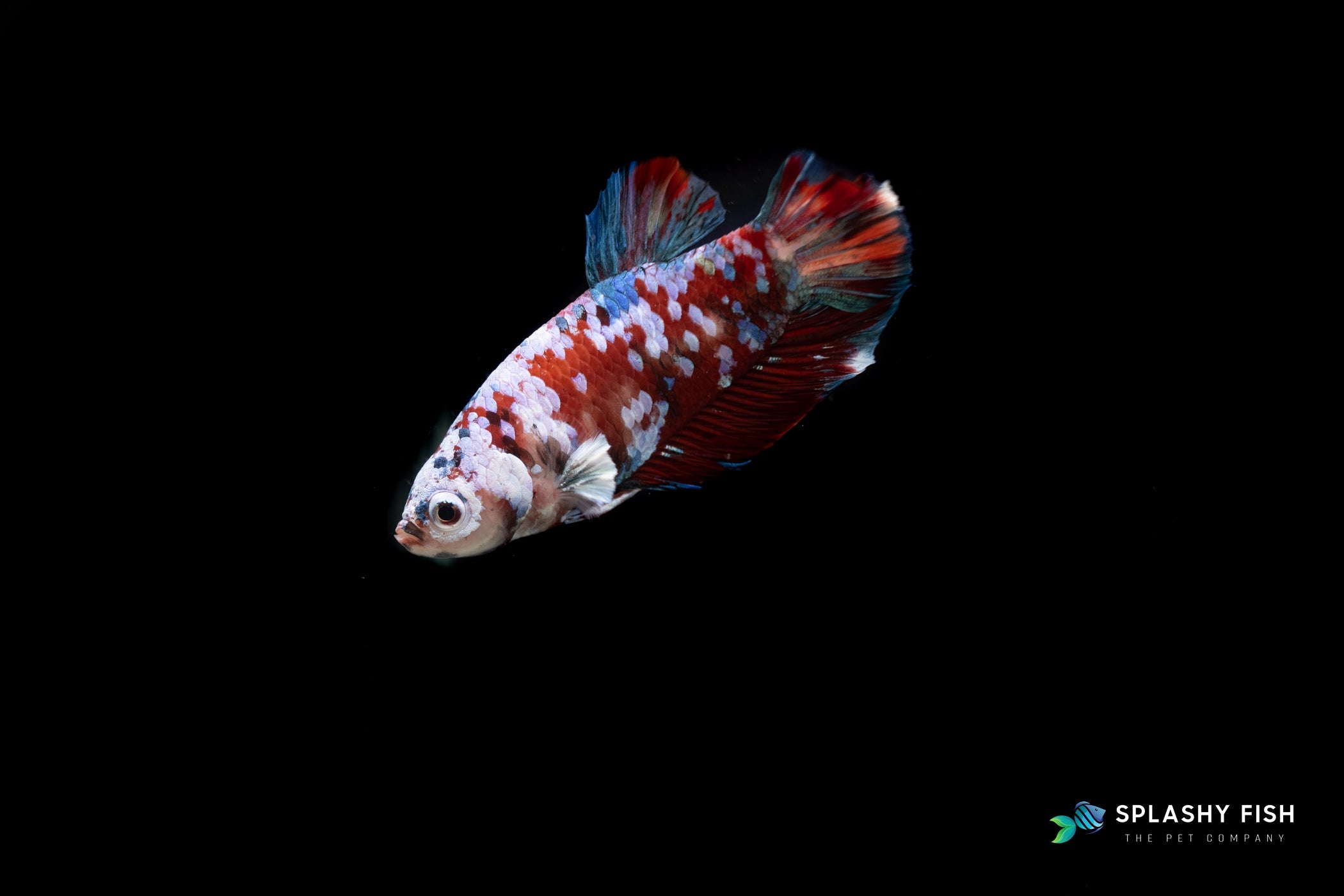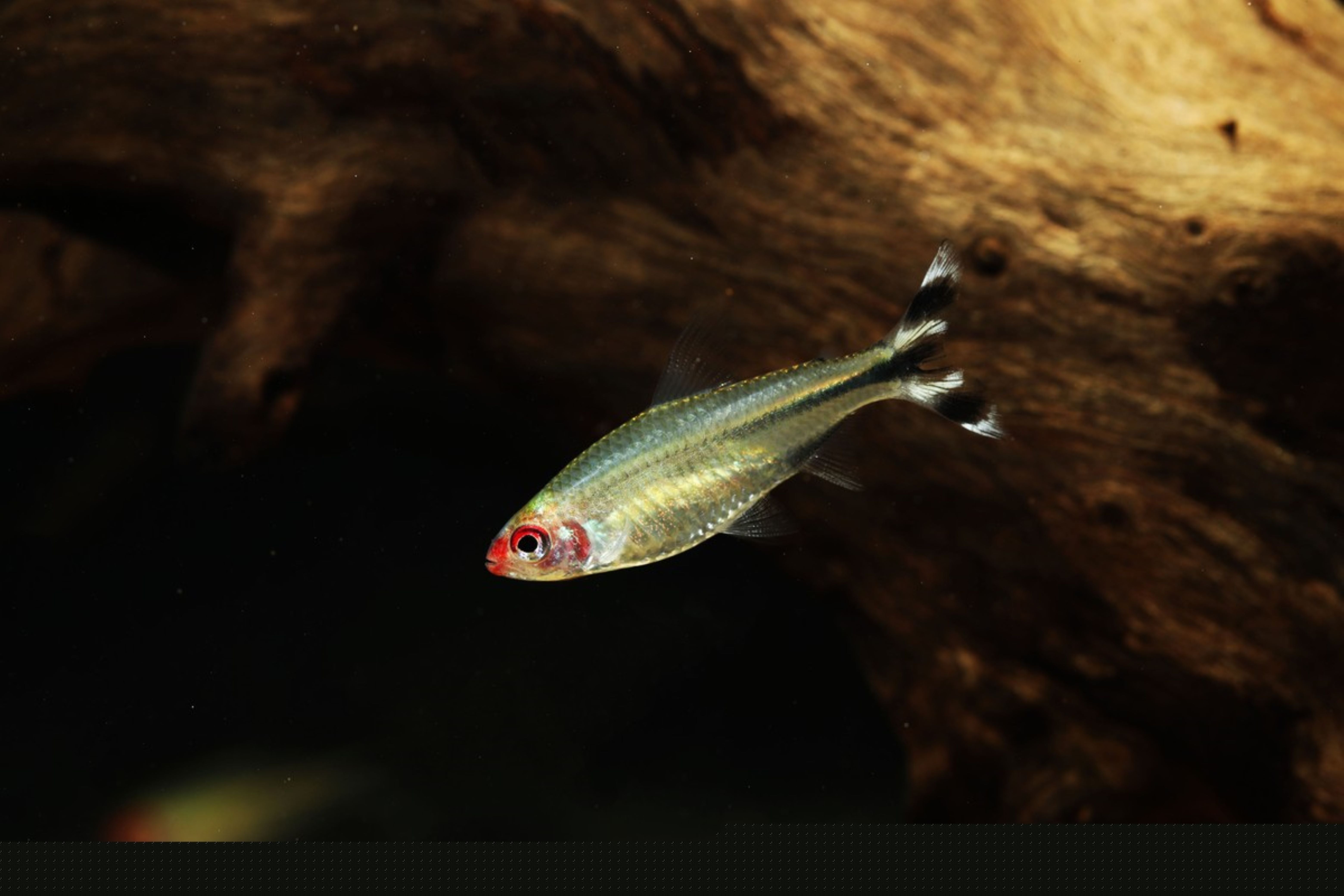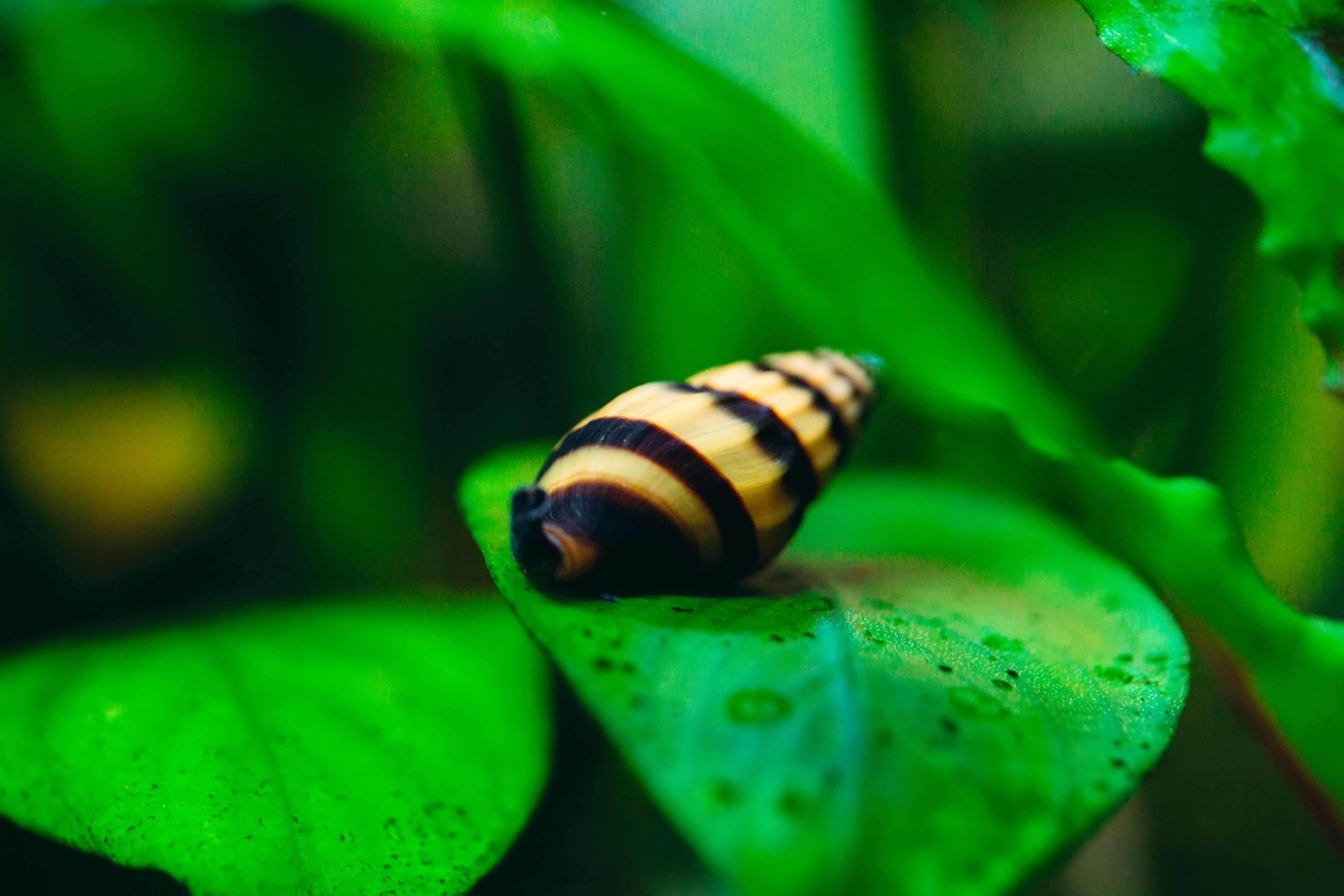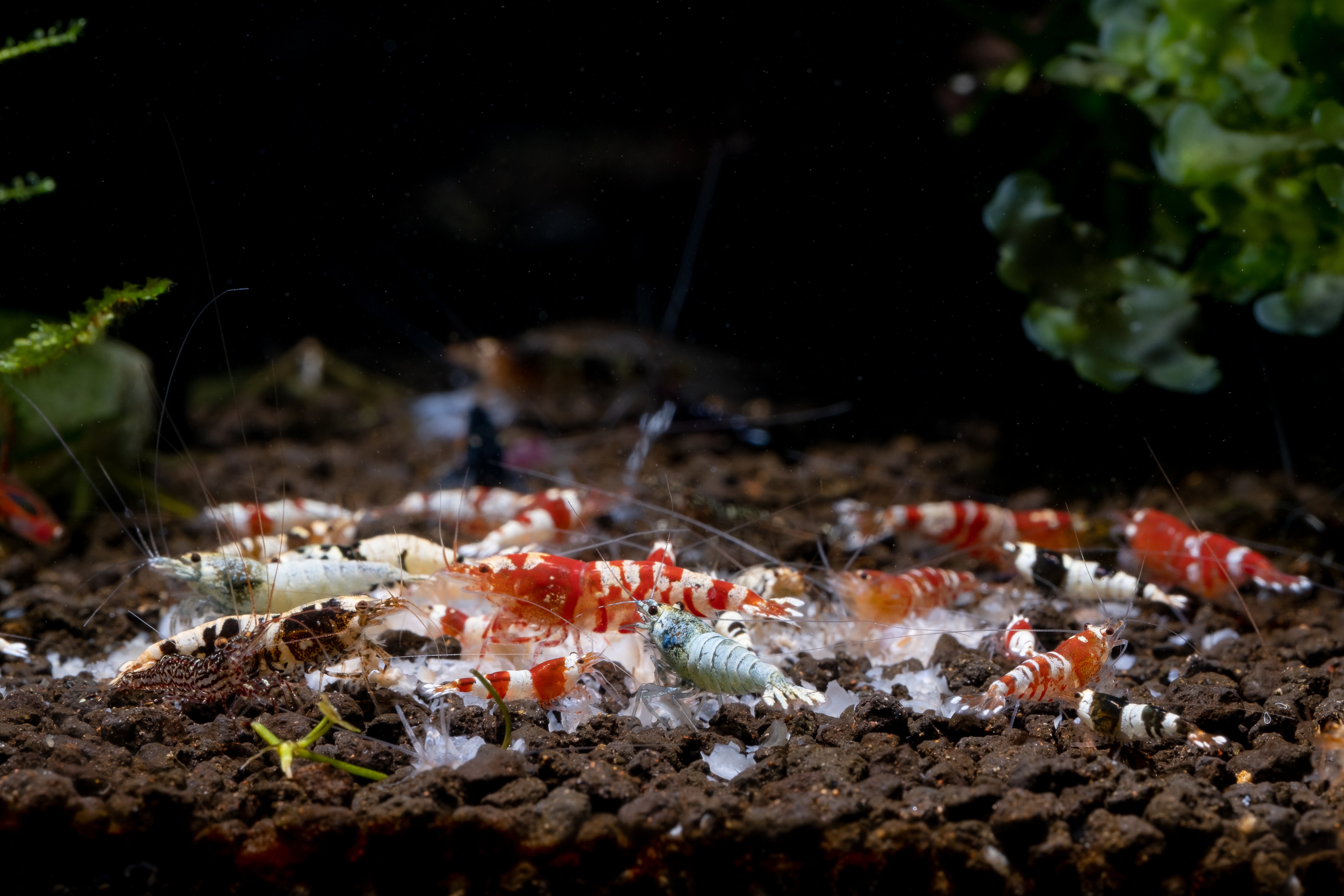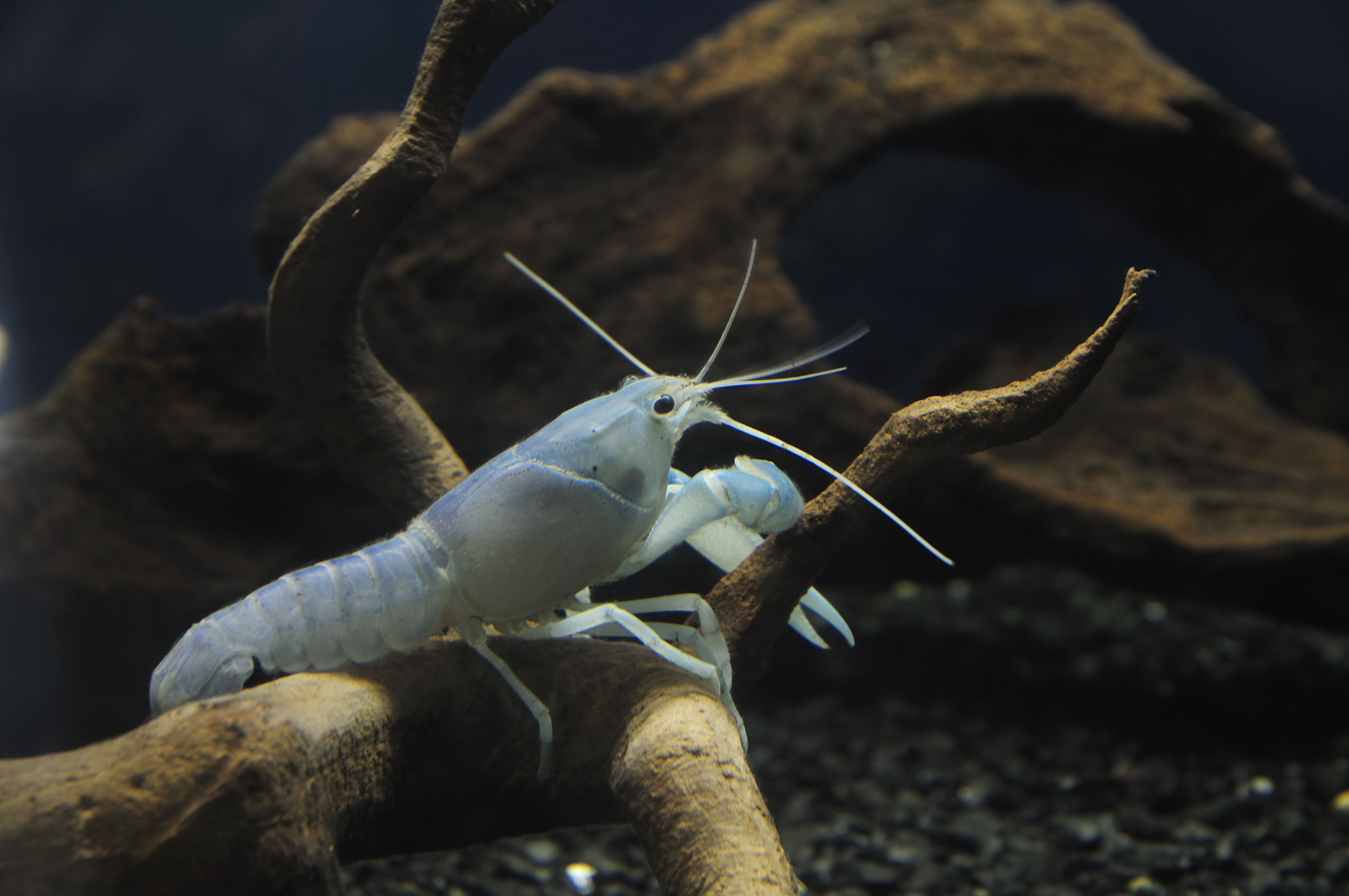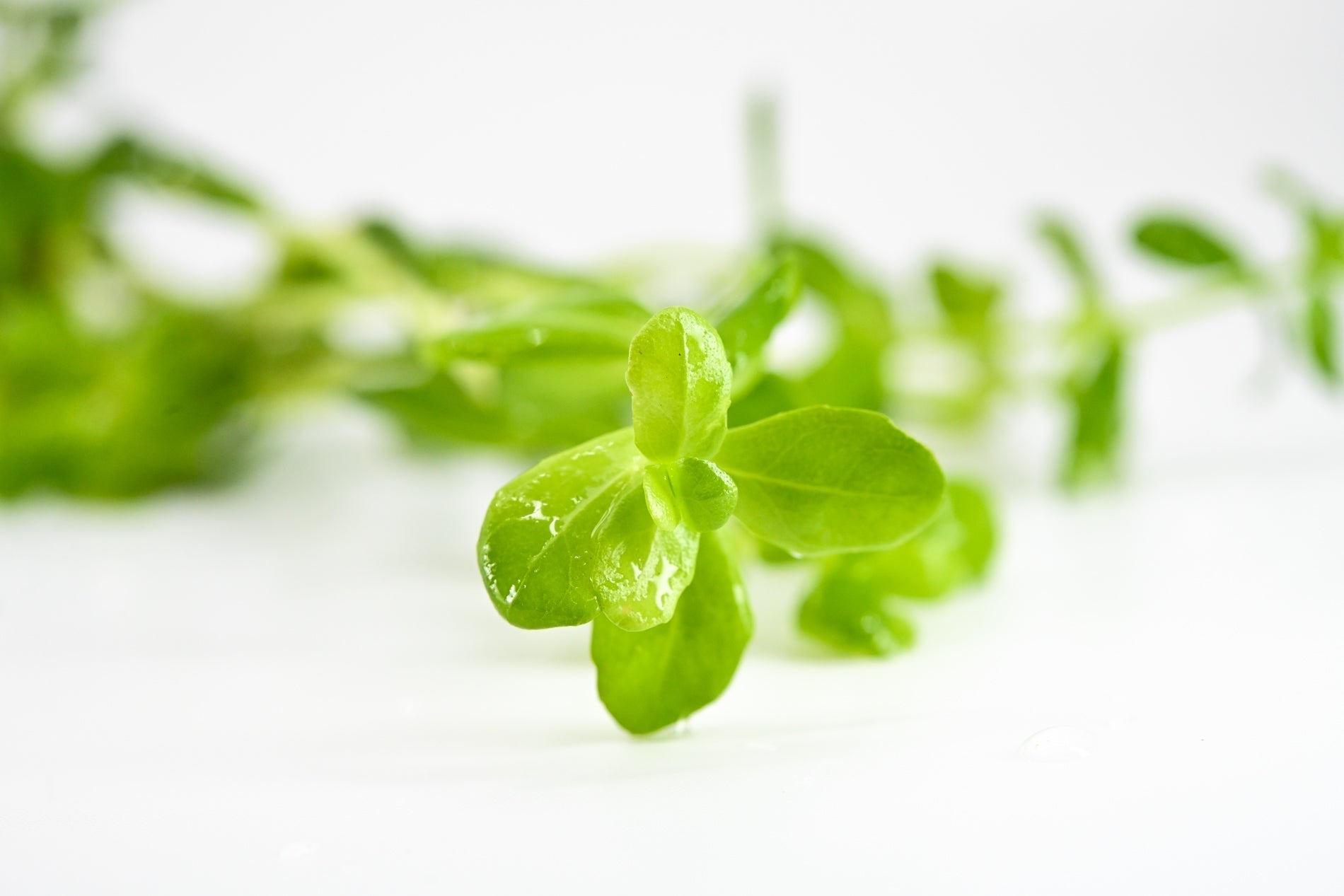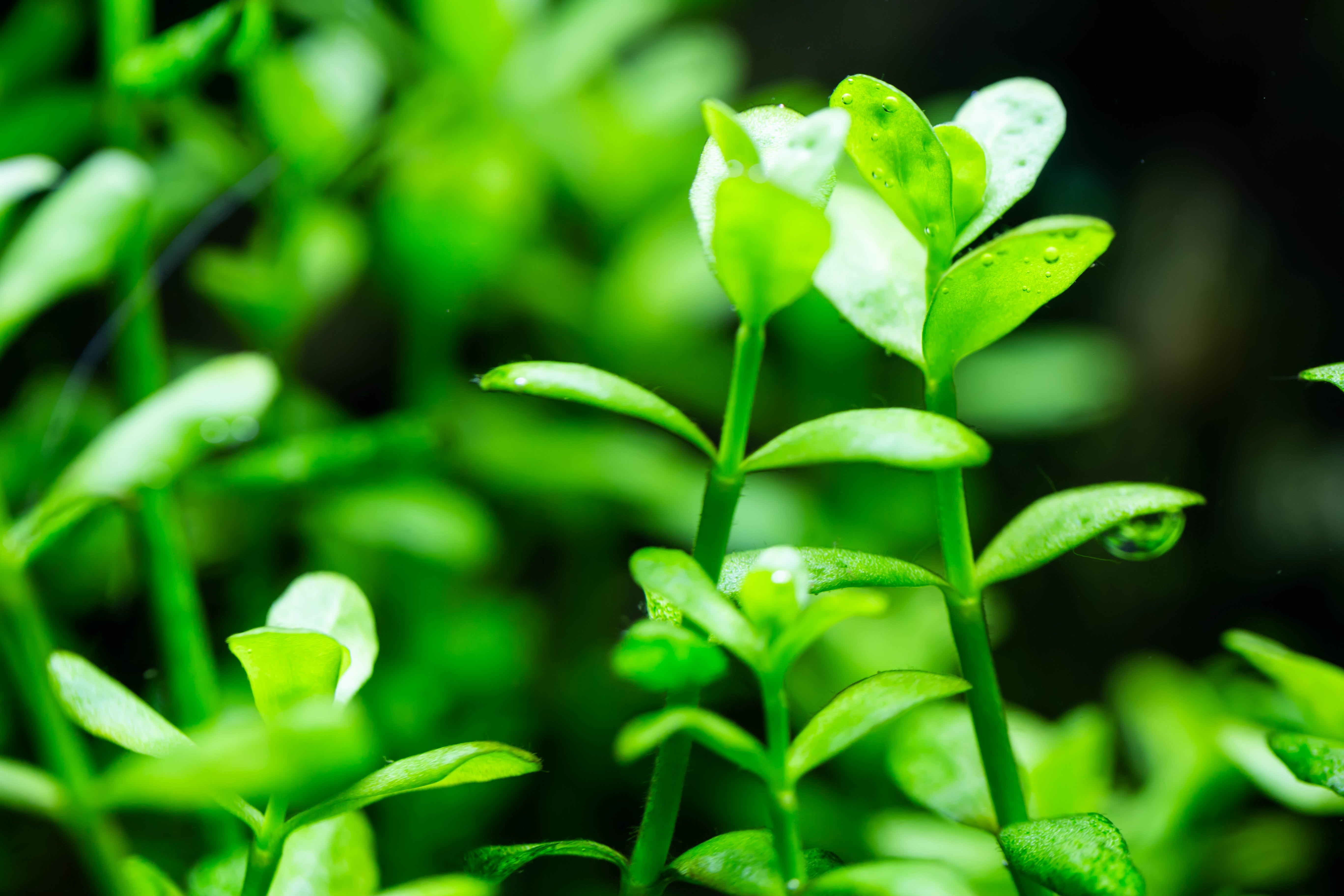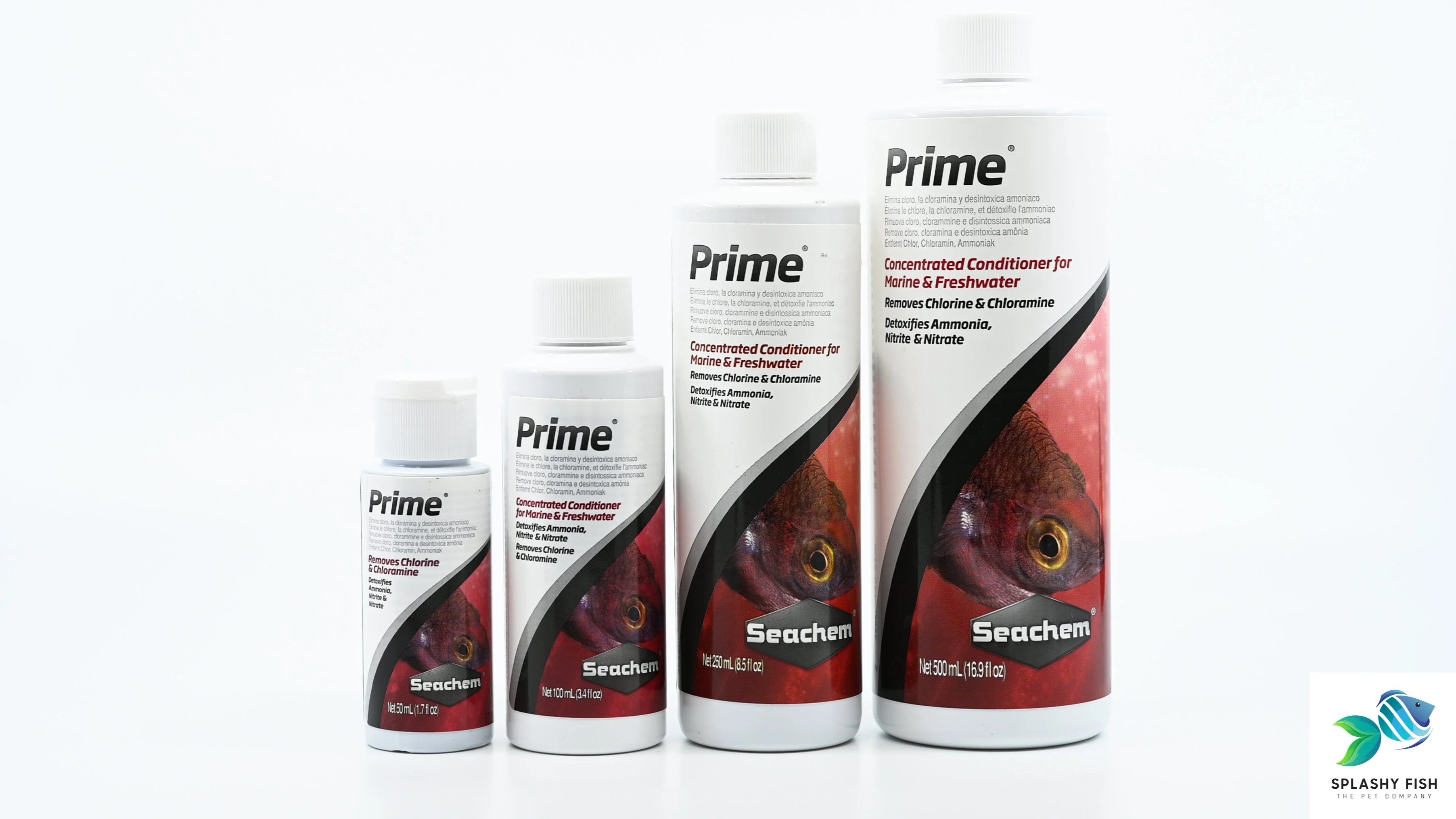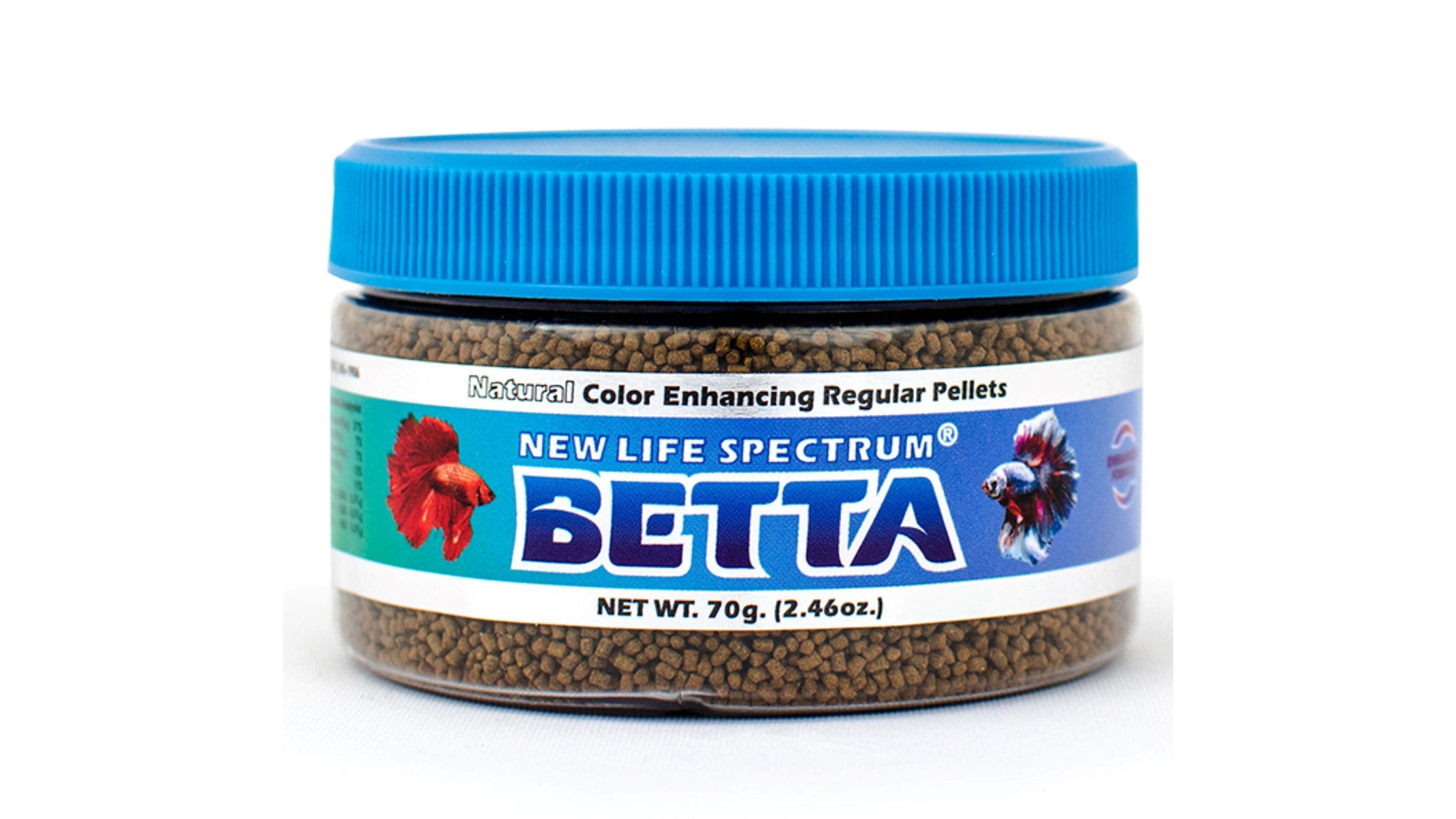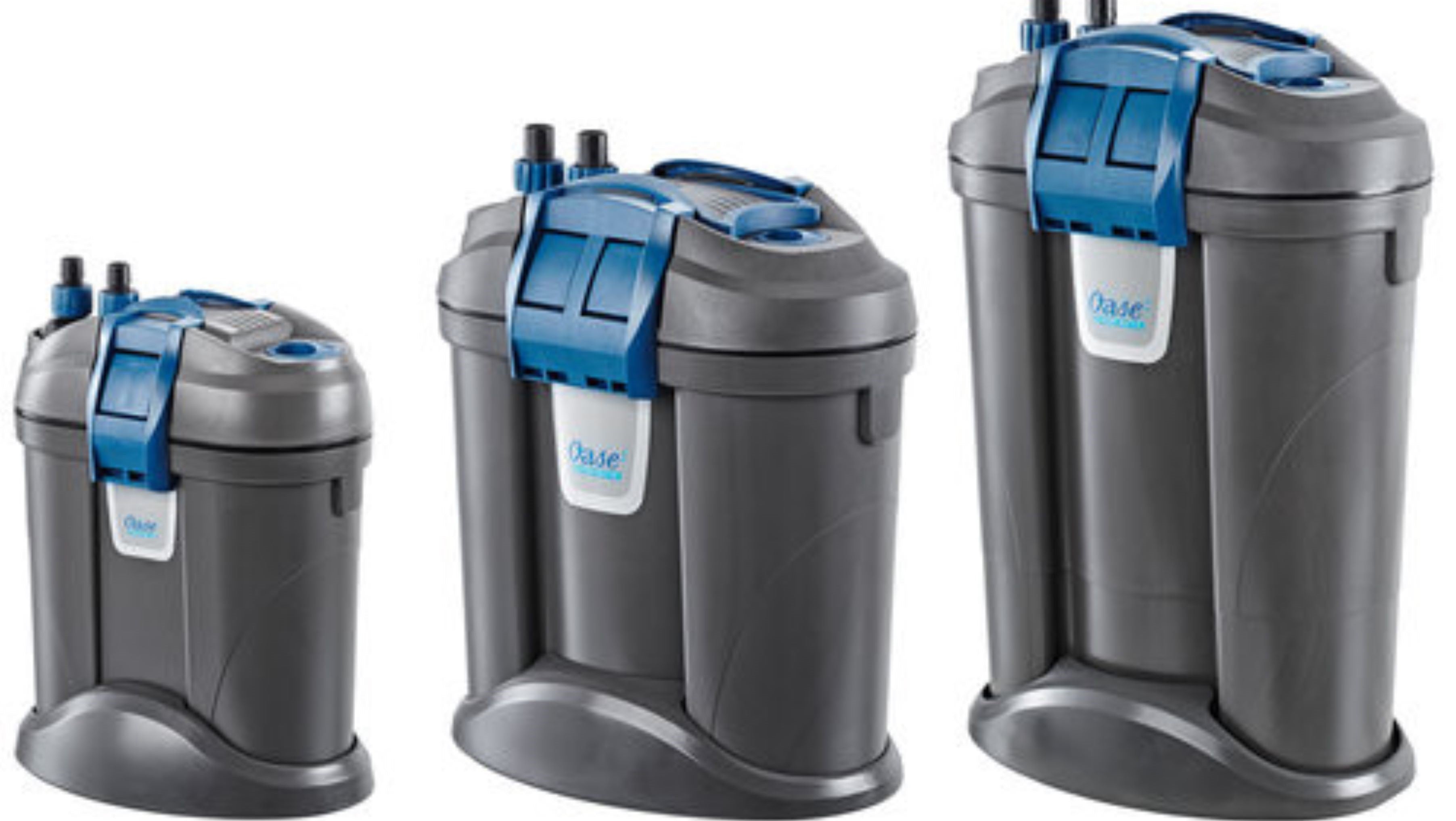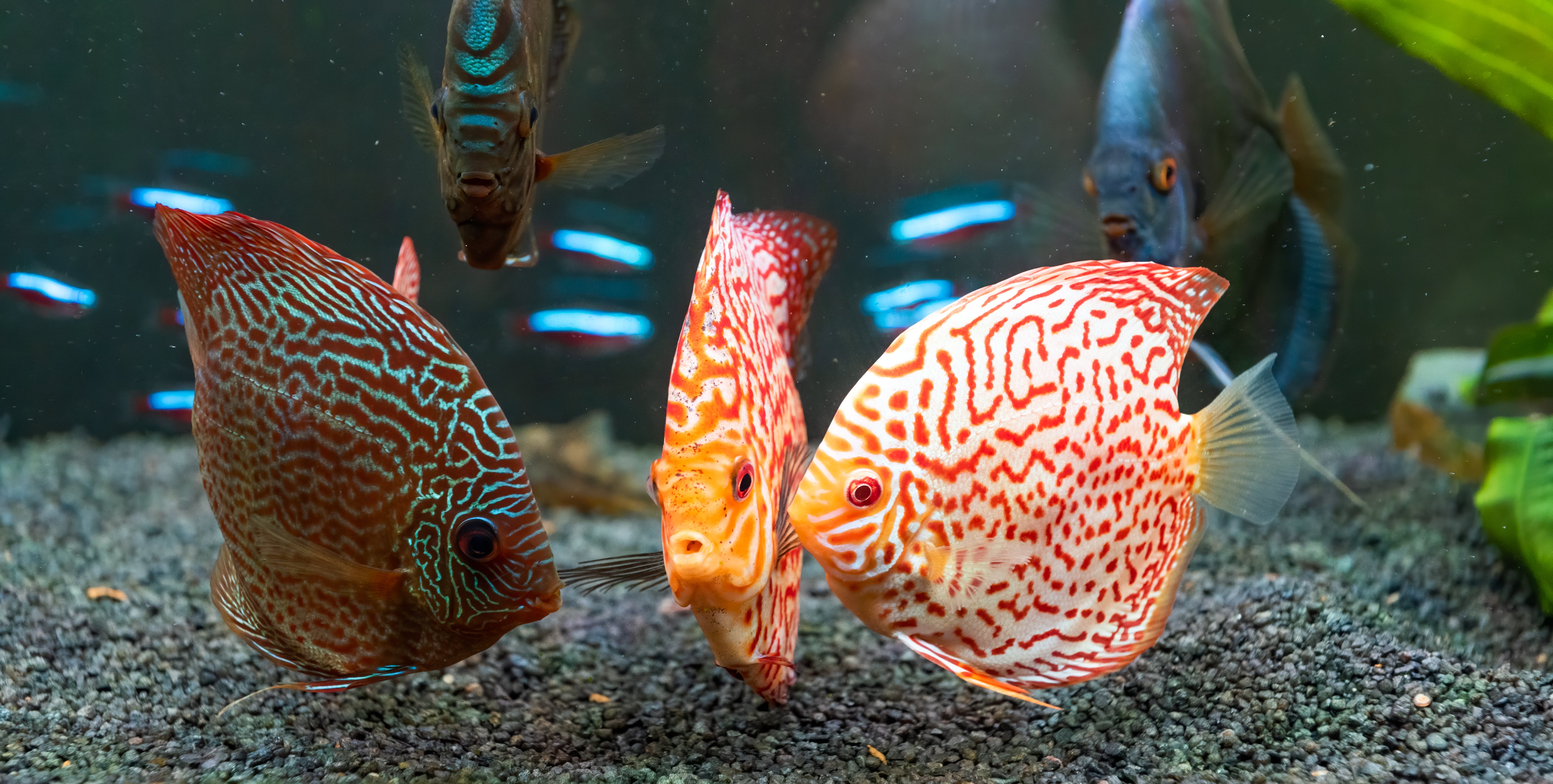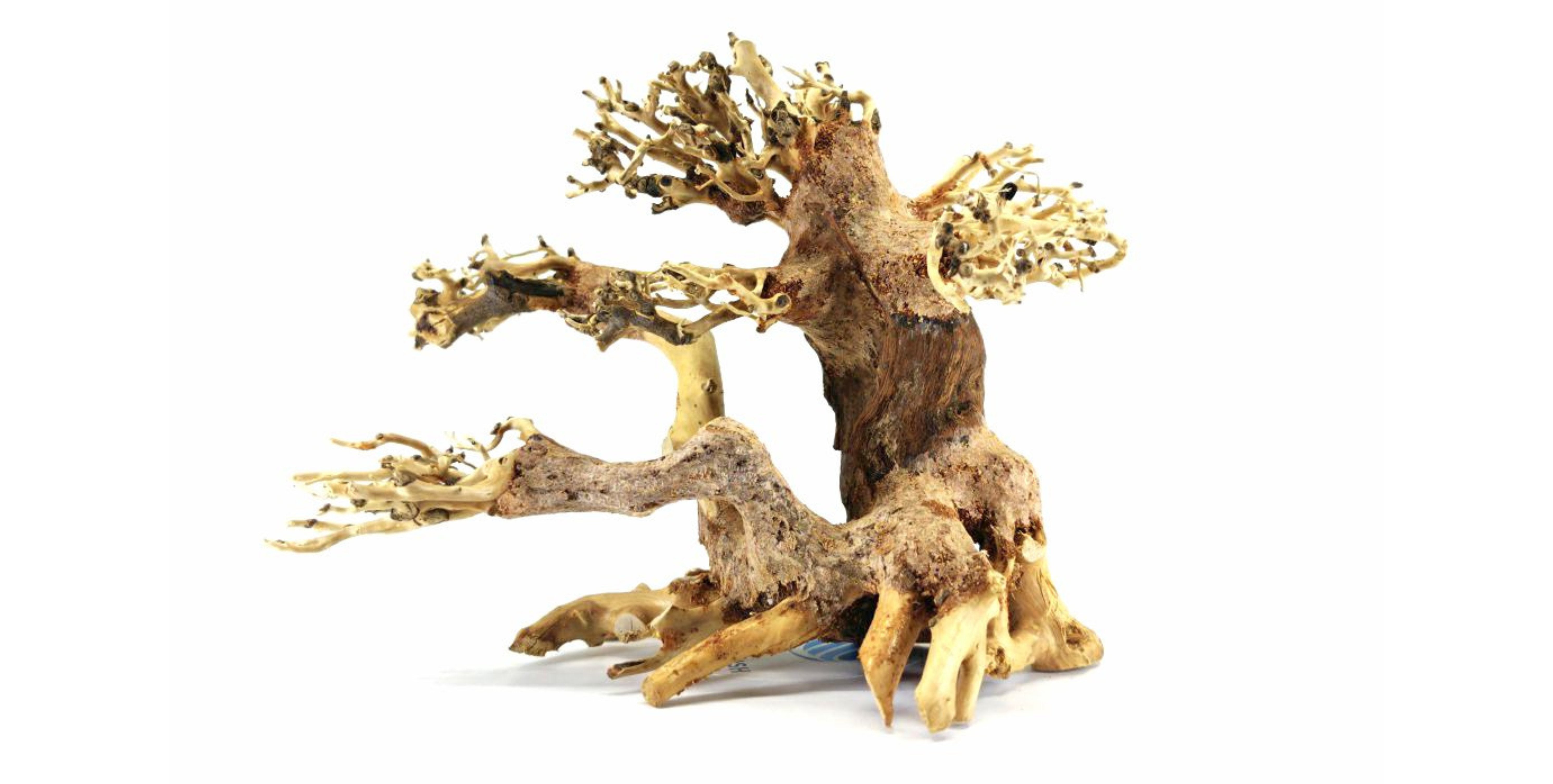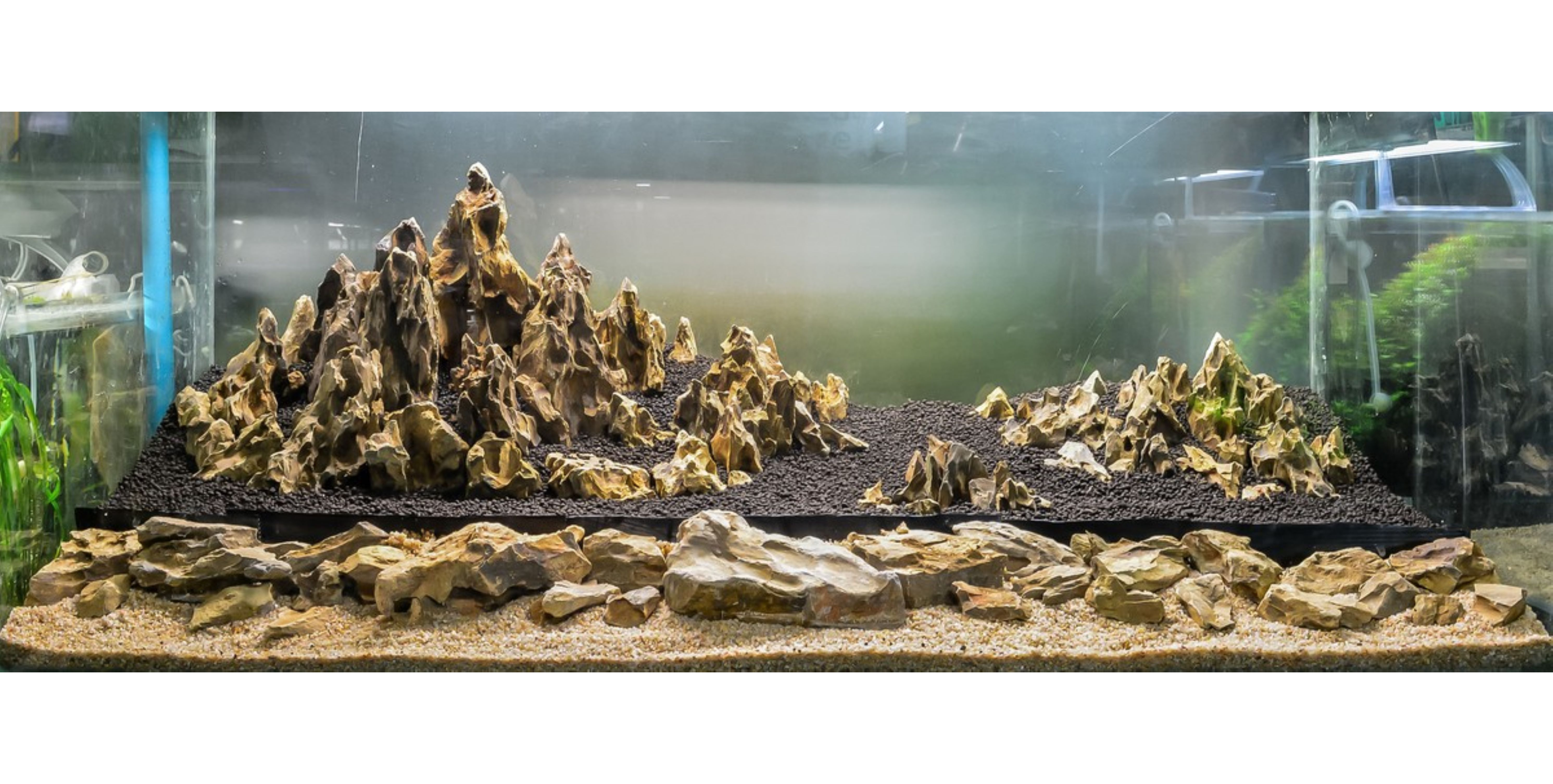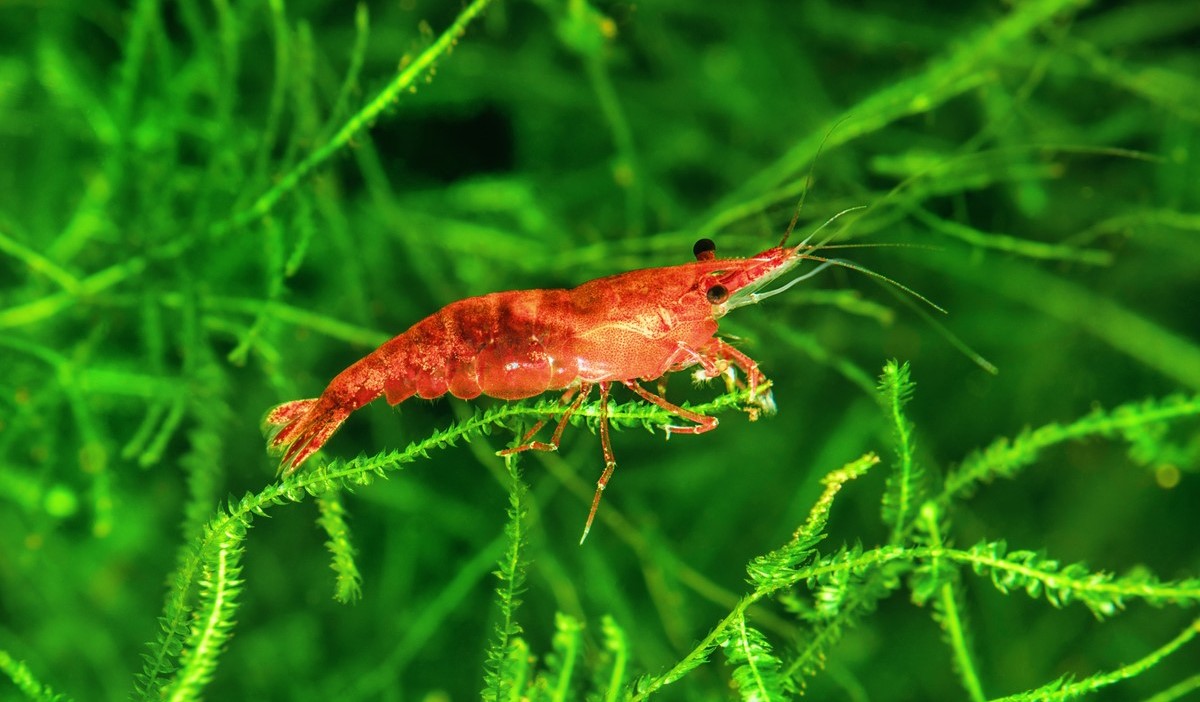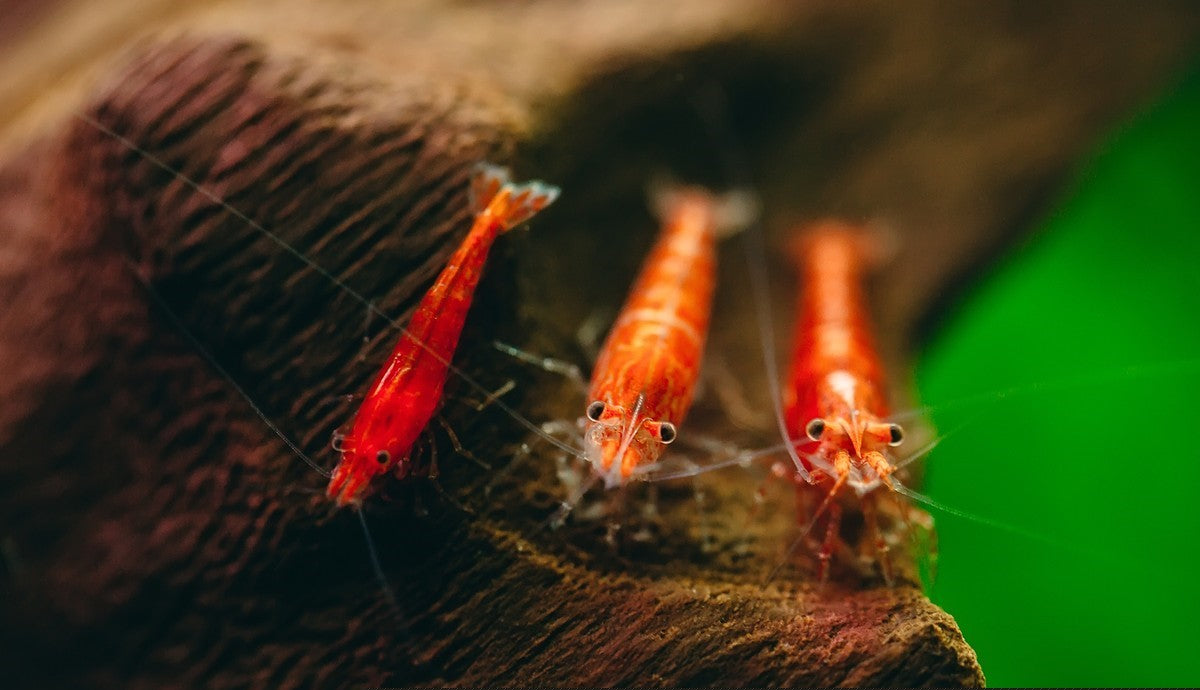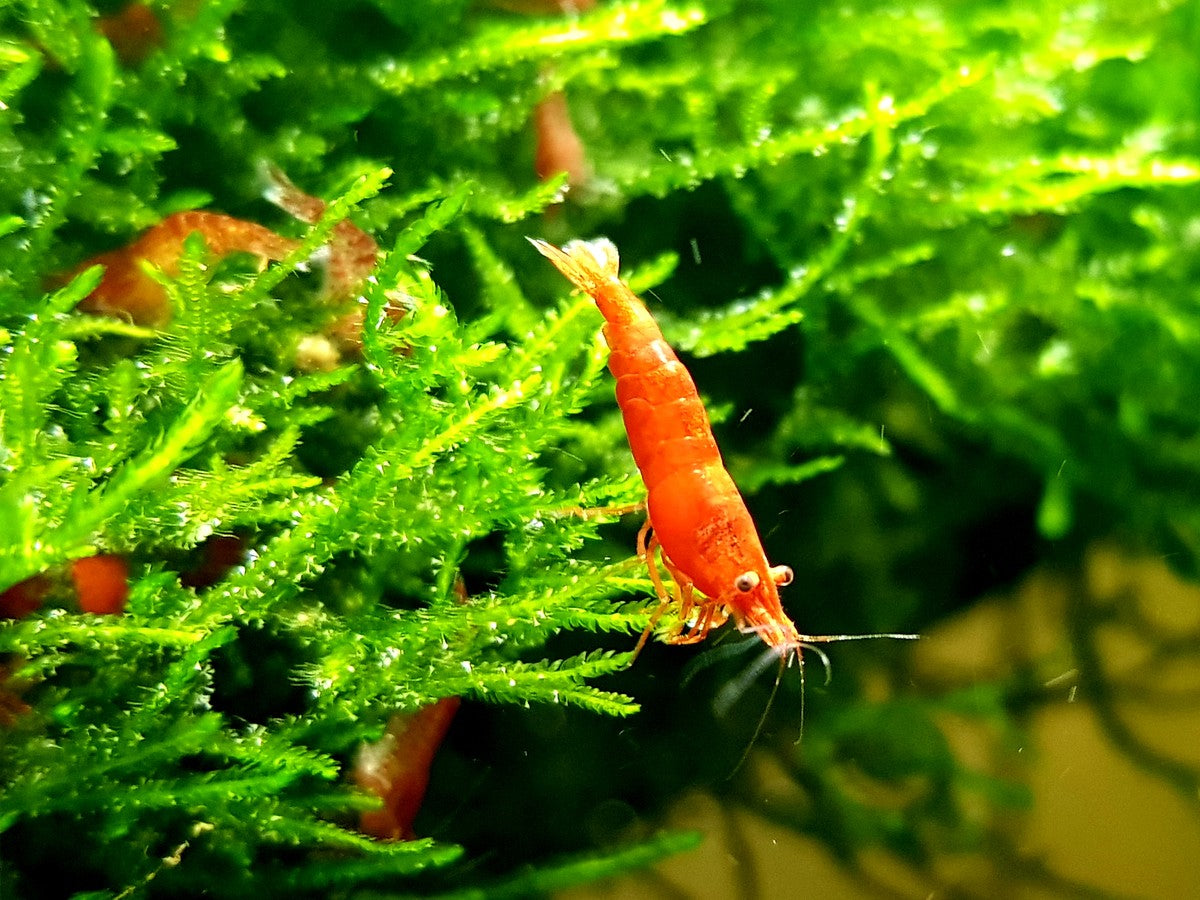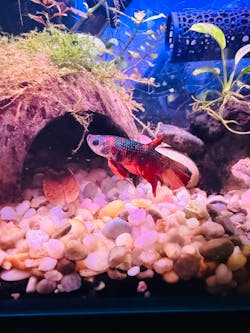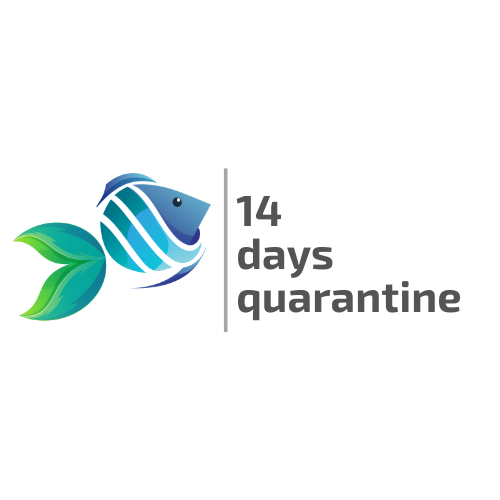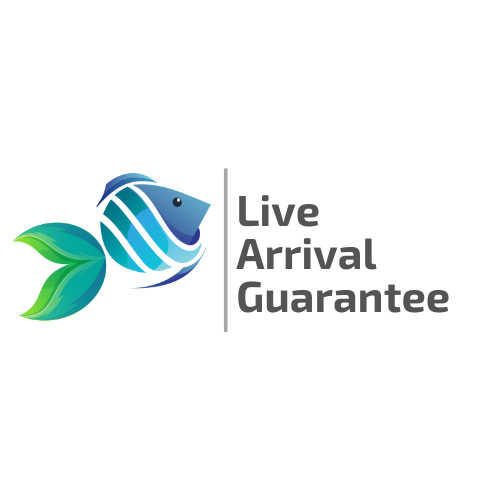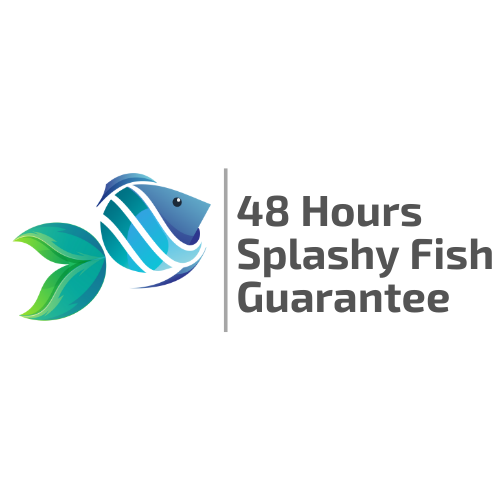Red Cherry Shrimp
- In stock, ready to ship
- Inventory on the way
- Live Arrival Guarantee
- Get free shipping on non-live fish orders over $75 and live fish orders over $300.
- All our live fish, shrimp, snails are care with love and passion, when through minimum of 14 days quarantined and shipped from Splashy Fish facility in Springfield, Virginia, USA

This is only apply to live fish order.
What is Our Live Arrival Guarantee?
Benefit from our extensive experience in shipping live fish. In 2021, our records indicated a mere 0.5% dead-on-arrival (DOA) rate for all live fish orders, compared to the industry standard of 1.5%. These numbers translate to only 5 out of 1000 orders experiencing DOA fish.
At Splashy Fish, customer satisfaction is our priority. That's why we provide a 100% Live Arrival Guarantee on all animals shipped via USPS, UPS, or FedEx. Please note - Splashy Fish reserves the right to void Live Arrival Guarantee protection under the following circumstances:
- The customer has chosen USPS First Class Mail as a shipping method.
- The shipping address is a PO Box address
- The order was refused delivery by the customer.
- If the order is returned to the sender for any reason. For instance, an incorrect shipping address, an undeliverable address, etc.
- The order was held for pick up at USPS, UPS, and FedEx offices for longer than 24 hours after the last update on the tracking number.
- The Live Arrival Guarantee claim does not include all the requirements mentioned below
- The Live Arrival Guarantee claim is made after the claim period mentioned below.
- The animals are not in their original packaging
Live Arrival Guarantee Claim Period:
For Live Fish and other invertebrates, one and a half hours (1.5 hours) after the posted delivery time.
For Snails: 48 hours after the posted delivery time.
Steps to claim Splashy Fish's Live Arrival Guarantee:
- Take a picture of the shipping box and the shipping label.
- For live fish and other invertebrates: Please provide two pictures of each bag (containing the dead fish) upon arrival. Ensure the images display the bag in its original, unopened condition with the original rubber band intact
- For Snails: Position the snail in one corner of the tank. If the snail does not move within 48 hours, please take several pictures of the snail's opening
- Send an email to DOA@splashyfishstore.com with the subject line: DOA and Your Order Number, or message us on social media.
- In the body of the email, include your tracking number.
- The claim must be sent within the claim period mentioned above.
After submitting the required information, please allow us 1-3 business days to determine the cause of the issue. If the claim is valid and approved by our team, you will
- Receive a store credit for future purchases, excluding the shipping cost, of the dead-on-arrival fish
If the Live Arrival Guarantee claim does not meet all listed requirements, Splashy Fish reserves the right to reject it.
Shipping live animals and plants is a complex process, and temperature plays a crucial role in ensuring the safe and secure delivery of your order.
If the highest daytime temperature in your location and the lowest nighttime temperature here in Springfield, Virginia—where our facility is situated—fall below 40°F or exceed 90°F, we will proactively delay your order. This measure is taken to prioritize the well-being of the animals and plants.
For the safety of our living cargo and to protect your investment, we retain the right to suspend shipping as necessary due to extreme weather conditions. Our Splashy Fish team will assess the situation and determine if it is unsuitable to ship, considering the safety of the animals.
To stay informed or address any questions or concerns, feel free to reach out to our dedicated Splashy Fish Support team via email at support@splashyfishstore.com.
Once our team prints and packs your order, we'll notify you via email. This notification will include your tracking number and the expected arrival day. If you opt for UPS 2 Day shipping, your package should arrive within 2 days after shipment. Similarly, if you choose UPS 1 Day, your order will reach you the day after it is shipped. In the case of orders containing only plants or dry goods, they may be shipped via USPS, provided that this is the selected shipping option during checkout.
We ship all of the customer orders from our warehouse located in Springfield, VA. We pack and ship our orders depending on the orders with the exception of someday we cannot ship out live fish.
All Orders: will be shipped out from Monday to Thursday each week for overnight shipping by UPS.
Sunday: (Splashy Day) Today is the day we let our hard-working team members and our fish to destress and ready for the following week's shipment.
For more information regarding about shipping please visit us our Shipping Policy and Schedule
Scientific Name: Neocaridina davidi
+1 in the title means that it is a free additional shrimp that we include when you purchase to cover for any Dead on Arrival during transit. We are not going to charge for any additional shrimp that is sent to customers above the amount customers purchase.
Red Cherry Shrimp Coloration
Red Cherry Shrimp are known for their brilliant red hues, which can range from light pinkish-red to deep, intense crimson. Higher-grade varieties, such as Fire Red Shrimp and Painted Red Cherry Shrimp, exhibit solid and uniform coloration, making them highly sought after by shrimp enthusiasts. Their vibrant colors become even more pronounced when they are kept in tanks with dark substrate and plenty of live plants, providing a stunning contrast that makes them stand out.
Red Cherry Shrimp Size
Adult Red Cherry Shrimp typically reach a size of 1 to 1.5 inches (2.5 to 3.8 cm), making them an ideal choice for nano tanks and planted aquariums. Their small size allows them to navigate tight spaces, helping to clean algae and biofilm from hard-to-reach areas in the tank. Despite their delicate appearance, these shrimp are surprisingly resilient and can thrive in a variety of freshwater conditions.
Red Cherry Shrimp Behavior
Red Cherry Shrimp are peaceful, active, and highly social invertebrates that spend most of their time foraging on plants, decorations, and substrates in search of algae and organic debris. These Neocaridina Shrimp are best kept in groups, as they feel more secure and exhibit natural behaviors when in the company of their own species. Unlike fish, they do not compete aggressively for food, making them a great addition to community tanks. Watching a colony of Red Cherry Shrimp graze throughout an aquarium is both fascinating and beneficial for the overall health of the ecosystem.
Red Cherry Shrimp Care Requirements
One of the reasons Red Cherry Shrimp are so popular is their ease of care. They thrive in a wide range of water parameters, making them one of the most beginner-friendly freshwater shrimp species. Ideal water conditions include temperatures between 65-80°F (18-27°C), a pH range of 6.5-7.5, and moderate water hardness. Regular water changes and stable water parameters are essential to their long-term health. Since shrimp are sensitive to toxins, it’s important to avoid using copper-based medications or excessive fertilizers in planted tanks. A mature, cycled aquarium with plenty of hiding spots, such as Marimo Moss Balls, driftwood, or shrimp caves, will provide them with the best environment to thrive and reproduce.
Red Cherry Shrimp Compatibility
Red Cherry Shrimp are peaceful and do best when housed with other non-aggressive tank mates. Suitable freshwater fish companions include small species like Neon Tetras, Ember Tetras, Fancy Guppies, and Otocinclus Catfish. They also coexist well with other dwarf shrimp species, such as Blue Dream Shrimp, Amano Shrimp, and Yellow Shrimp. However, they should not be kept with large or aggressive fish like Cichlids, Bettas, or Barbs, as they may become prey. If you want to maximize breeding success, a shrimp-only or shrimp-friendly tank with plenty of plants is ideal.
Red Cherry Shrimp Diet
Red Cherry Shrimp are omnivores and will consume a variety of foods, including algae, biofilm, and leftover fish food. While they naturally graze on soft algae in the tank, supplementing their diet with high-quality shrimp pellets, blanched vegetables (such as spinach, zucchini, and cucumber), and algae wafers ensures they receive all the necessary nutrients. Providing a well-balanced diet not only keeps them healthy but also enhances their red coloration.
Red Cherry Shrimp Recommended Tank Parameters
- Temperature: 65° - 80° F (18° - 26° C)
- pH Range: 6.4 to 8.0, ideal range: 6.8 to 7.5
- KH Range: 3 - 4 dKH
- GH Range: 7 - 8 dGH
- TDS: 100-300
- Minimum tank size: 2 gallons
See more details about Care Guide for Neocaridina Shrimp
Why Should You Buy Red Cherry Shrimp at Splashy Fish Store?
At Splashy Fish tropical fish store, our Red Cherry Shrimp for sale and other freshwater shrimp for sale are quarantined 14 days before shipping to ensure the best quality to our beloved customers. You can buy Red Cherry Shrimp online or visit our aquarium store in Virginia for more freshwater fish for sale, betta fish for sale, live aquatic plants for sale, and aquarium supplies.
Red Cherry Shrimp Frequently Ask Questions (FAQs)
Are red cherry shrimp hard to keep?
Red Cherry Shrimp are one of the easiest shrimp species to keep, making them perfect for beginners. As long as you maintain stable water parameters and provide quality food, they will thrive and breed naturally in your aquarium. Adding plenty of aquatic plants helps create a safe environment for them. Their adaptability and vibrant color make them a great choice for freshwater tanks.
What is the lifespan of a red cherry shrimp?
Red Cherry Shrimp (Neocaridina davidi) typically live 1-2 years under ideal conditions. To maximize their lifespan, they require clean water with a pH between 6.5-8.0 and a temperature range of 14-30°C (57-86°F), with the optimal temperature being around 72°F (22°C). As omnivores, they thrive on a balanced diet and a well-maintained environment, making them a great choice for freshwater aquariums.
How many red cherry shrimp should be kept together?
For optimal care, Red Cherry Shrimp should be kept in groups of at least 10-15 shrimp per 5 gallons of water, as they thrive in small communities. Since shrimp produce minimal waste, they can be kept in relatively dense populations, but maintaining water quality is crucial. If you're looking to breed Red Cherry Shrimp, a 20-gallon tank is ideal, providing ample space for growth and population expansion.
Discover the Colorful World of Red Cherry Shrimp: A Guide to Keeping and Caring for these Delightful Aquatic Creatures
Are you ready to dive into the vibrant world of red cherry shrimp? These delightful aquatic creatures are not only visually stunning but also relatively easy to care for, making them a popular choice for both experienced and beginner aquarists. In this comprehensive guide, we will take you through the ins and outs of keeping and caring for red cherry shrimp. Whether you are a seasoned shrimp keeper or just starting out in the world of aquatics, this article is here to provide you with all the information you need to create a thriving environment for your red cherry shrimp. From setting up the perfect shrimp tank to maintaining optimal water conditions, we will cover it all. Discover the secrets of successful shrimp breeding, as we delve into the intricacies of their mating habits and ideal water parameters. Learn how to provide your shrimp with a nutritious diet and create the perfect habitat for them to thrive. Join us on this exciting journey as we uncover the wonders of red cherry shrimp and unlock the secrets to their care and keeping. Get ready to create a colorful and thriving aquatic paradise in your own home.
The Natural Habitat of Red Cherry Shrimp
Red Cherry Shrimp (Neocaridina davidi) originate from the freshwater streams, rivers, and ponds of Taiwan, where they thrive in shallow, slow-moving waters rich in aquatic vegetation and organic debris. Their natural environment provides ample food sources, shelter from predators, and ideal breeding conditions.
In the wild, Red Cherry Shrimp feed on biofilm, algae, decaying plant matter, and microorganisms, making them excellent natural cleaners. They are often found grazing on submerged surfaces, driftwood, and plant leaves, continuously contributing to the ecosystem’s balance.
The Benefits of Keeping Red Cherry Shrimp
Keeping Red Cherry Shrimp in a freshwater shrimp tank offers multiple benefits, making them a top choice for aquarists of all experience levels. Whether you’re looking to maintain a clean aquarium, add color, or establish a self-sustaining colony, these freshwater shrimp provide significant advantages:
1. Natural Algae Cleaners
Red Cherry Shrimp are efficient scavengers that constantly graze on biofilm, algae, and decaying organic matter. By doing so, they help maintain cleaner tank surfaces, reducing unwanted algae buildup on live aquarium plants, glass, and aquarium decorations.
2. Low Maintenance and Hardy Species
Unlike other aquarium shrimps, Red Cherry Shrimp are incredibly hardy and adaptable, capable of thriving in a wide range of water parameters. This makes them an ideal choice for aquarium beginners and a low-maintenance addition to any aquarium tank. They can tolerate moderate fluctuations in temperature and pH, provided that water quality remains stable.
3. Easy Breeding for a Self-Sustaining Colony
With the right conditions, Red Cherry Shrimp breed readily without the need for special intervention. Females regularly produce egg clutches, which hatch into fully formed baby shrimp, making it easy to establish a self-sustaining shrimp population.
4. Compatible with Peaceful Tank Mates
Red Cherry Shrimp can peacefully coexist with a variety of non-aggressive fish and invertebrates, including:
-
Nano fish such as Neon Tetras, Ember Tetras, and Harlequin Rasboras
-
Freshwater snails like Nerite Snails and Mystery Snails
-
Other dwarf shrimp species (such as Amano Shrimp and Blue Velvet Shrimp)
Due to their small size, it’s essential to avoid housing them with large or predatory fish like Cichlids, Betta fish, or Goldfish, as these species may eat them.
5. Aesthetic Appeal and Vibrant Colors
One of the standout features of Red Cherry Shrimp is their bright red coloration, which contrasts beautifully with green aquatic plants and dark substrate. This makes them a visually striking addition to any aquarium, enhancing its overall appearance.
Additionally, Red Cherry Shrimp come in different grades of coloration, from low-grade transparent reds to deep fire reds, allowing aquarists to choose live freshwater shrimp that best suit their tank’s aesthetics.
Setting Up a Suitable Tank for Red Cherry Shrimp
Creating a well-structured tank for shrimp is essential for maintaining their health, encouraging natural behaviors, and promoting successful breeding. Red Cherry Shrimp are relatively easy to care for, but providing the right tank size, filtration, substrate, and decor ensures they thrive in their environment.
1. Choosing the Right Tank Size
While Red Cherry Shrimp are small, they require a stable environment to remain healthy. The recommended minimum tank size for a small colony is 5 gallons, but for better water stability and breeding success, a 10-gallon or larger aquarium is preferred. Larger tanks dilute toxins more effectively, reducing the risk of sudden water parameter fluctuations that could stress or harm shrimp.
If you plan on expanding your shrimp colony, a larger tank provides more space for population growth without overcrowding.
2. Filtration for Shrimp Tanks
Since shrimp are delicate and sensitive to strong currents, choosing the right filtration system is important. Gentle water flow is key to preventing stress, so the best filter options for shrimp tanks include:
-
Canister Filters – Ideal for shrimp tanks as they provide biological filtration, gentle water movement, and a surface for biofilm growth, which shrimp feed on.
-
Low-Flow HOB (Hang-On-Back) Filters – If using an HOB filter, add a pre-filter sponge over the intake to prevent baby shrimp from being sucked in.
A well-cycled filter helps maintain ammonia and nitrite levels at zero, which is crucial since freshwater shrimp are highly sensitive to water contaminants.
3. Choosing the Best Substrate and Decor
The right substrate and tank decor not only enhance the appearance of your shrimp tank but also support shrimp health and natural behaviors.
Recommended Aquarium Substrates:
-
Dark-colored substrates (such as aquarium gravel or sand) enhance the red coloration of Red Cherry Shrimp, making them stand out more.
-
Active substrates (such as ADA Amazonia) help stabilize pH in soft water setups, ideal for shrimp breeding tanks.
Essential Tank Decor:
-
Live Aquatic Plants: Adding Java Moss, Anubias, Bucephalandra, and Hornwort provides hiding spots and biofilm surfaces for shrimp to graze on.
-
Driftwood & Indian Almond Leaves: These release tannins and natural antibacterial compounds, which improve freshwater shrimp immunity and promote healthy molting.
-
Cholla Wood & Marimo Moss Balls: These encourage biofilm growth, a natural food source for freshwater shrimp.
A well-decorated shrimp-friendly tank reduces stress and encourages natural behaviors, such as foraging, molting, and breeding.
Water Parameters and Temperature Requirements for Red Cherry Shrimp
Maintaining stable water parameters is crucial to keeping Red Cherry Shrimp healthy. While they are adaptable, they thrive best within the following optimal water conditions:
1. Temperature Control
Red Cherry Shrimp prefer stable temperatures between 72-78°F (22-26°C). Temperatures outside this range can cause:
-
Lower temperatures (< 70°F / 21°C) – Slower metabolism and reduced breeding rates.
-
Higher temperatures (> 80°F / 27°C) – Increased metabolism, shorter lifespan, and potential oxygen depletion.
Using a reliable aquarium heater helps maintain a consistent temperature, especially in colder climates.
2. pH, Hardness, and Water Chemistry
-
pH Level: Red Cherry Shrimp thrive in a neutral to slightly acidic pH range of 6.5-7.5.
-
General Hardness (GH): 6-10 dGH provides essential minerals like calcium and magnesium, which aid in healthy shell development and molting.
-
Carbonate Hardness (KH): 2-6 dKH ensures a stable pH and prevents fluctuations that could stress shrimp.
To maintain optimal shrimp health, consider using RO (reverse osmosis) water with shrimp mineral additives or dechlorinated tap water if it meets the required parameters.
3. Maintaining Water Quality
Since Red Cherry Shrimp are highly sensitive to ammonia and nitrite spikes, maintaining excellent water quality is critical.
-
Ammonia & Nitrite Levels: Must be 0 ppm. Even low levels can be toxic.
-
Nitrate Levels: Should be kept below 20 ppm to prevent stress. Nitrates can accumulate from excess feeding or lack of water changes.
4. Water Change Routine
Perform weekly 10-20% water changes to maintain stability. When adding new water:
-
Use dechlorinated water to avoid chlorine poisoning.
-
Ensure the new water matches the existing temperature and parameters to prevent shrimp stress.
-
Drip-acclimate shrimp when performing large water changes to avoid shocking them.
A consistent water change routine ensures a clean, stable environment, promoting healthy growth, molting, and breeding in your shrimp colony.
Feeding and Nutrition for Red Cherry Shrimp
Red Cherry Shrimp are omnivorous scavengers, meaning they consume a wide variety of foods to maintain their health, coloration, and breeding success. In a well-established tank, they will naturally graze on algae, biofilm, and organic debris, but supplementing their diet with nutrient-rich foods ensures they receive all the essential vitamins and minerals for optimal growth.
Best Foods for Red Cherry Shrimp
-
Algae and biofilm – Naturally occurring in the aquarium, these form the primary natural food source for aquarium shrimp. A mature tank with biofilm-covered surfaces provides a steady diet, but additional feeding is needed in newer setups.
-
High-quality shrimp pellets or wafers – Specialized shrimp food is formulated with essential nutrients, including calcium and proteins, to support healthy molting and shell development.
-
Blanched vegetables – Vegetables like zucchini, spinach, and carrots are excellent sources of fiber, minerals, and antioxidants. Blanching softens them, making it easier for shrimp to consume.
-
Protein-rich foods – Occasional high-protein treats such as bloodworms, daphnia, and brine shrimp boost growth and support shrimp reproduction. However, these should be fed sparingly to avoid water pollution.
-
Indian Almond Leaves (Catappa Leaves) – These provide a natural food source while also releasing beneficial tannins and antibacterial compounds, promoting shrimp immunity and reducing stress.
To prevent overfeeding, offer small portions once a day and remove uneaten food after a few hours to maintain water quality. Freshwater shrimp have small stomachs and do not require large amounts of food, as they continuously forage throughout the day. A balanced diet combined with a biofilm-rich environment will keep Red Cherry Shrimp healthy, active, and brightly colored.
Breeding and Reproduction of Red Cherry Shrimp
One of the most exciting aspects of keeping Red Cherry Shrimp is their ease of breeding. Given the right water conditions, stable temperatures, and a stress-free environment, these freshwater shrimp will reproduce naturally and frequently, requiring minimal intervention from the aquarist.
Freshwater Shrimp Breeding Process
Mating occurs naturally when female shrimp molt, releasing pheromones that attract males. Males will actively seek out a freshly molted female to fertilize her eggs.
Females carry eggs under their abdomen (often referred to as being "berried") for about 25-30 days. During this time, they constantly fan the eggs with their pleopods (swimming legs) to ensure proper oxygenation.
-
Once hatched, baby shrimp emerge as fully formed miniatures of their parents and immediately begin grazing on biofilm and microscopic organisms. Unlike some aquatic species, Red Cherry Shrimp do not go through a larval stage.
How to Ensure a High Survival Rate for Baby Shrimp
-
A shrimp-only tank or a heavily planted aquarium provides a safe habitat where baby shrimp can hide from potential predators.
-
Fine-leaved plants like Java Moss and floating plants help create a secure environment for juveniles.
-
Feeding specialized baby shrimp food (such as powdered spirulina or biofilm enhancers) can increase survival rates, as newborn shrimp have tiny mouths and require microscopic food particles.
-
Stable water conditions are essential for successful breeding, as fluctuations in temperature, pH, or water hardness can affect egg development and hatching rates.
Common Diseases and Health Issues in Red Cherry Shrimp
While Red Cherry Shrimp are known for their hardiness and adaptability, they are still susceptible to diseases and health issues if their water quality is poor or if they experience high stress levels. Many shrimp ailments arise due to unstable water parameters, nutrient deficiencies, or bacterial infections. Recognizing the signs early and taking preventive measures can help maintain a healthy and thriving shrimp colony.
Common Problems and Their Prevention
-
Molting Issues – Freshwater shrimp periodically shed their exoskeletons as they grow, but improper molting can occur due to a lack of essential minerals like calcium and magnesium. If shrimp struggle to molt or become trapped in their old shell, it is often a sign of low GH (general hardness). To prevent this, provide a calcium-rich diet (blanched spinach, cuttlebone, or specialized shrimp mineral supplements) and maintain stable GH levels using shrimp-safe remineralizers.
-
Bacterial Infections (Vorticella, Chitinolytic Bacteria) – Vorticella appears as white, cotton-like growths on the shrimp's body, while chitinolytic bacterial infections cause soft-shell syndrome and blackened areas on the exoskeleton. These infections thrive in poor water conditions. Treatment involves using shrimp-safe antibacterial medications, improving filtration, and maintaining pristine water quality through regular water changes.
-
Parasites (Ellobiopsidae, Scutariella Japonica) – These parasites can manifest as white or greenish growths on the shrimp’s body or head. Infected shrimp may appear lethargic and struggle to molt. Separating infected shrimp, using salt baths (for mild cases), and treating with shrimp-safe antiparasitic medications can help eradicate these parasites.
The best way to prevent shrimp diseases is to maintain stable water parameters, avoid overfeeding, perform regular water changes, and quarantine new shrimp before adding them to the main tank. Providing a stress-free environment with plenty of hiding spots will also boost shrimp immunity and longevity.
Tank Mates and Compatibility with Red Cherry Shrimp
Choosing the right tank mates for Red Cherry Shrimp is crucial, as many freshwater fish species naturally view shrimp as prey. To ensure their safety, it’s essential to select peaceful, non-aggressive tank mates that will coexist harmoniously without posing a threat.
Best Tank Mates for Red Cherry Shrimp
-
Nano Fish – Small, peaceful fish such as Ember Tetras, Neon Tetras, and Harlequin Rasboras are excellent companions for shrimp, as they do not actively hunt shrimp or shrimp fry.
-
Bottom Dwellers – Otocinclus Catfish and Corydoras Catfish are great tank mates because they primarily feed on biofilm and algae, rather than shrimp.
-
Freshwater Snails – Mystery Snails, Nerite Snails, and Ramshorn Snails are excellent additions to a shrimp tank, as they help clean the aquarium without harming shrimp.
-
Other Freshwater Shrimp Species – Red Cherry Shrimp can coexist with Amano Shrimp, Ghost Shrimp, and Blue Velvet Shrimp, as long as there is ample space and food for all.
Tank Mates to Avoid
-
Aggressive or Large Fish – Species such as Cichlids, Betta Fish, Angelfish, and Goldfish will actively hunt and eat shrimp. These fish should not be kept in the same tank if you want to maintain a stable shrimp colony.
-
Loaches and Paleatus Catfish – Clown Loaches and larger predatory catfish may also target shrimp as food.
For those who want to maximize shrimp survival rates, setting up a shrimp-only tank or a heavily planted community tank with peaceful fish is the best way to ensure a thriving shrimp population.
Conclusion: Enjoy the Beauty and Charm of Red Cherry Shrimp in Your Aquarium
Red Cherry Shrimp are an incredible addition to freshwater aquariums, offering vibrant colors, natural algae control, and active behaviors that enhance the beauty and balance of any tank. With their easy care requirements, peaceful nature, and ability to breed readily, they are an excellent choice for both beginner and experienced aquarists.
By maintaining stable water conditions, providing a nutrient-rich diet, and choosing compatible tank mates, your shrimp colony will flourish, creating a self-sustaining, dynamic aquatic environment. Whether you're setting up a dedicated shrimp tank or adding them to a planted community aquarium, Red Cherry Shrimp bring life, movement, and ecological benefits to any setup.
By following this comprehensive care guide, you’ll be well-equipped to enjoy a healthy, colorful, and thriving Red Cherry Shrimp colony in your home aquarium!


